586% ratings growth for Discovery Kids with Little Singham’s launch: Vikram Tanna
April of this year saw Discovery Kids, the kids’ channel from Discovery Communications India, fortifying its presence in the country with launch of a new animation series, ‘Little Singham’. Discovery Kids has collaborated with Rohit Shetty Picturez and Reliance Animation to create India’s Superhero IP.
‘Little Singham’, which hit the little screens from April 21, 2018, has been launched at a never-before scale with 156 episodes and 5 tele features. The new animation series is being aired in 3 languages – Hindi, Tamil and Telugu. Dabur Red Paste has come on-board as the title sponsor of ‘Little Singham’.
The channel claims to have achieved a whopping 586 per cent ratings growth with the launch of ‘Little Singham’ in Week 17.
In conversation with Adgully, Vikram Tanna, VP, Head of Advertising Sales and Business Head of Regional Clusters, Discovery Communications India, speaks at length about the developments in the kids’ genre in India, development of it latest IP ‘Little Singham’ and the growth see post the show’s launch, what kids want to watch today, and much more. Excerpts:
Please take us through Discovery Kids’ journey. What are the trends and developments see in the kids’ genre today?
When we began this journey on Discovery Kids we syndicated a lot of content. To scale it up, we decided to do things differently but not scale it out of proportion. We came up with a differential and bold approach to build the whole product. Any product on the broadcast platform gets built on three pillars – programming, marketing and distribution. We have been distributed across quite well as a network and this is true for Discovery Kids as well, but we took a differential approach when it comes to the content.
There is a gap between when the IP is launched and when it becomes a blockbuster hit. The familiarity quotient helped us shorten this gap without resorting to expensive marketing. Then you let it take its time and grow, because kids are used to certain habits and certain characters and changing those habits is not easy.
We decided to boil down Bollywood to a familiar character or a familiar franchise that is very big, which is why we chose ‘Singham’ by Rohit Shetty. It’s been big and to our advantage and made us decide that we want to look at a pan-India market. ‘Singham’ offers you that differential advantage as the franchise is quite famous, not just in Hindi but also in Tamil and Telugu. We want the perception of Discovery Kids to be not only Hindi but Tamil and Telugu as well. That makes the show much more marketable and allows us to reach a pan-India audience.
Another factor that is very important today is brand safety with regard to parents. It is a big concern today in digital mediums, where large advertisers like P&G and HUL are getting it right by saying that they don’t want their advertising to appear in a certain context by buying space in certain programmes. In a broadcast platform, especially with regards to the kids’ genre, you want kids to watch entertainment, but with brand safety. At the same time, you also want you brand to be visible. With ‘Singham’, this works very well as you look at men in uniform that comes with a certain set of values and basically tick marks all the brand safety parameters regarding overall perception. Additionally, kids are always attracted to men in uniform. With this in mind, we launched ‘Little Singham’ and have got a tremendous response not just in viewership but also when we went around pre-selling the concept to advertisers.
Before the launch even began, we got partners and our advertising space was completely sold out. We got on board six founding partners, some of whom are already in the kids’ space like Dabur, Britannia and Dettol. Our other partners are Be Natural from ITC, Glucon D and Flipkart. These six founding partners really believed in the concept and the kind of content we were putting up.
If you look at any new IP launch, you typically start off by launching a particular broadcast, see how it works and then pump in more creative episodes, etc. We approached this a little bit more boldly. Of course, we did a lot of testing before the launch and were pretty confident when we went to market a humongous number of episodes in one go. That really helped because a bigger plank is better. We believed that beginning big would work and so did the advertiser. This along with the ratings coming in has been hugely successful and we are looking at growing our revenue four-fold.
The ratings have jumped several ranks, but our revenue growth is backed by two factors. The most important being pricing that has been influenced by a combination of both reach and perception. We have covered reach with a blockbuster IP, but what really plays a role in our arena is perception. That is where the brands are willing to pay a price to ensure brand safety. The second piece is volume. It is basically the price and volume elasticity that will lead to a four-fold growth in revenues.
When I talk about the revenue growth being four-fold, it is largely the broadcast side of the story. In the kids’ genre, when you’ve got a blockbuster hit, your broadcast revenue is just the beginning. That gives way to a lot of other revenue channels like licensing, merchandising, school contact programmes, and gaming. These are the various arenas that we have now started getting into and are looking at as additional streams of revenue apart from broadcast.
How are the kids viewing patterns changing today? Have you made a shift in your content strategy to meet their needs?
To reach a mass audience, I believe leveraging Bollywood is really important. Entertainment and Bollywood are the basic ingredients of ‘Little Singham’. Then you add other things related to the Superhero genre. In the context of broadcast, there are a diverse set of Superhero animation characters that you can look up to. If you look at the successful studios abroad, you can see how they have built a diverse range of licensing, merchandising and other interactive factors around their shows. So, with the core as broadcast and a ground up strategy of Superheroes, we can realise every child’s internal dream of becoming a Superhero themselves. They have an internal desire to help people out of troubled situations. This is exactly what we want to showcase in ‘Little Singham’.
‘Little Singham’ is basically the story of this brave young Superhero cop who defends the residents of his hometown. The entire setting is in this town of Mirchinagar, where you are always fighting against evil, but at the same time there is some entertainment thrown in for fun.
The ratings game keeps fluctuating. The launch of ‘Little Singham’ has boosted your numbers. What is your strategy to remain among the top 5 kids’ channels?
I think everything in programming is a function of the content you are offering the audience. There are the episodes and the repeats. We launched with a huge number of episodes and now the second wave will also begin. So, by feeding them original content we have shown that we have a lot to offer. To launch 300 episodes at one go is not something everybody does. That makes a real difference in delivering a blockbuster. A sound ground up strategy that you believe in, being prepared in the backend, along with the animation series and bulk episodes make a real difference with the kids. Then you keep giving them more and more episodes. We are also creating spikes beyond these episodes. We have created tele-features and movies based around this concept that are going to be aired across India. The first one is slated for launch in June and that will add another spike.
What do kids want to watch? Where do their loyalties lie? How are you building brand loyalty with kids?
The shows and the characters are not the channel. When you see the numbers shooting up over here, it is clear that an audience loyal to a certain set of channels have moved here. So, channel loyalty is an opportunity as much as it is a problem. It is very important then to keep the kids attached by extending the loyalty beyond the broadcast phase. Now, we have to quickly gear up and put out product in the market, including licensing, merchandising and full contact programmes. Gaming is another arena that we are looking at, along with our partner Reliance Animation. It is a question of how larger than life you can make the character so that the kids stick with it. When that happens, automatically the affinity to the channel increases. After all, this is the home of ‘Little Singham’.
Most of the content on kids’ channels have comprised of global content. But now we are seeing a lot of home grown characters gaining traction. How is the regional market driving this growth?
We recognized the importance of the regional segment at the launch itself. That is why the ground up strategy has been pan-India. For us, it is not just the language dubbing that makes the character regional, the ‘Singham’ franchise itself is rooted in the Tamil and Telugu feeds. That gave us an extra edge over other players in the market. Other players in the market showcase global content dubbed in Hindi that makes it more accessible. But for us, the character of Singham and the franchise is rooted in the local language and culture of the people. This creates a real differentiation as kids relate to the character and not the channel, it helps that they are familiar with the character from day one. Other channels would have to spend money on marketing to create that familiarity, which would take a lot of time as well. This is why ‘Little Singham’ is reaching audiences instantly because the familiarity factor is an added advantage in all markets.
Why do kids’ shows tend to be more of animated content? Is Discovery Kids contemplating live action shows for children?
I think it’s a combination. Animation programming works for sure. We haven’t really tested going for live action, but we are very open and have a team that looks at the possibilities.
You have mentioned that the Tamil and Telugu markets are doing really well. Do you plan on expanding into other regional markets?
Not at this stage. In terms of volume of distribution we are already there, so we are constantly looking at the needs and wants of consumers. We will not shy away from options, but at the moment we are only interested in Hindi, Tamil, and Telugu. This is a decision taken with regard to distribution and not with regard to the channel.
How has having an existing IP been advantageous for you? Are you looking to create more such IPs?
A local IP always helps. If you have a global IP and you deliver eyeballs on the broadcast, you are still limited because the local audience’s connect with the character is not so strong. But when you have a local IP, or a ground up IP, it helps you bring in revenues and it becomes a long term growth mechanism. So, you grow on the linear platform and create multiple revenue streams through that platform. Consumer connect is a huge leverage for monetisation and we try to build upon that.
How much influence do parents have on what their kids are watching and the duration of watching?
I think there definitely is a parental influence. Parents are very clear on what they want their kids to watch, whether it’s on TV or mobile phones. In a country like India, parents are very clear about what is good and what is bad for their child. It is very important to get parental approval on these matters. Discovery has always stood for the brand of values of doing the right things, so with entertainment at the forefront, we coupled it with other parameters that Singham offers naturally. Ultimately, once that sampling is done, it is the kid who decides if they want to stay on a particular channel. Quite often the parents are watching these shows along with their kids.
How big an influencer are kids today?
The Bollywood aspect of our programming helped gain advertisers in terms of sheer numbers. After the launch of ‘Little Singham’ we were approached by automobile brands and brands associated with kids’ theme parks. A lot of new categories of clients came on the back of ‘Little Singham’ and that success and volume elasticity helped boost our revenue growth. This works for the advertisers as well. Let’s take, for example, automobile brands, they look at kids as major influencers to get their mom or dad to buy a particular car and so these platforms really help in the overall scheme of things. When you walk into an automobile showroom and observe the families, you will see the kids looking at a particular car. That itself is influencing the parents’ decision. I have observed people around showrooms as I’m very curious about the mindset of the consumer and I’ve noticed that kids have a very important voice when it comes to not only choosing the make, but also the colour of the vehicle.
With parents and schools becoming more health conscious, what is your stance in this regard as a kids’ channel?
There will be vignettes for legal reasons, of course. I don’t think kids take to someone who preaches to them. Today, you can see the beverage brands shying away from these channels because of code of conduct and this is happening across the industry. There is more and more health awareness today in this space. More than us, the guys who are creating ads for the brand are very conscious of the positioning of their ads. Even outside the kids’ genre, you see a lot of self-regulation happening within brands on these platforms. Brands are very sensitive towards kids and are reluctant to put themselves in that environment, especially as they can be criticised on social media by consumers.
With the summer vacations currently on, what are your plans to engage kids both on-air and off-air?
We strongly believe in seasonality, and the whole idea of launching ‘Little Singham’ in the summer ties with that. For me, the launch itself is more important than creating engagement off screen because the entire launch creates an enormous spike and, like I said earlier, we have also planned movies, other interactive programming. The idea right now is to further enhance this IP and focus on building the IP than get involved in too many communications. Our strong marketing programme at the launch continues to draw eyeballs. We will move on to a 360-degree programme, including school contact programmes, etc. I think that’s a must and every kid’s brand has to do that. We chose the launch timing carefully as it reflects how important summer specials are for us.
Discovery Kids has claimed to have seen a 400 per cent growth. Can you elaborate on what is propelling this growth?
There are two or three things that propel growth. The first is that brands want to associate with the kind of content that creates affinity towards the brand. Then the brand is happy to associate with this kind of content and that leads to more categories of advertisers entering these kinds of platforms. The influx of new clients and new categories leads to volume growth. I look at revenue growth as a function of volume and pricing.
The pricing is largely factored by the reach of the broadcast, the number of eyeballs you have and the perception of the brand. Perception is driven by leveraging the brands association with the show. Those who sponsor the show get the added advantage of brand perception and that their spot is in a better environment than anywhere else. This two-pronged approach looking at pricing and volume elasticity is basically what is driving our four-fold growth right now from a revenue perspective.
How has Discovery Kids’ viewership been in the last four weeks?
Viewership data is the purview of BARC itself.
Discovery Kids has achieved 586 per cent ratings growth with the launch of new animation series ‘Little Singham’ in Week 17 and stabilising now at 51 GRPs, still showing a 356 per cent growth in Week 20 as compared to Week 1 of the year. The ranking jumped from No. 10 in Week 1 to No. 3 in Week 17 and now stabilising at No. 5. Discovery Kids has ranked No. 3 for the first time since its launch in 2012. (BARC Ratings, 2-14, All India Urban).




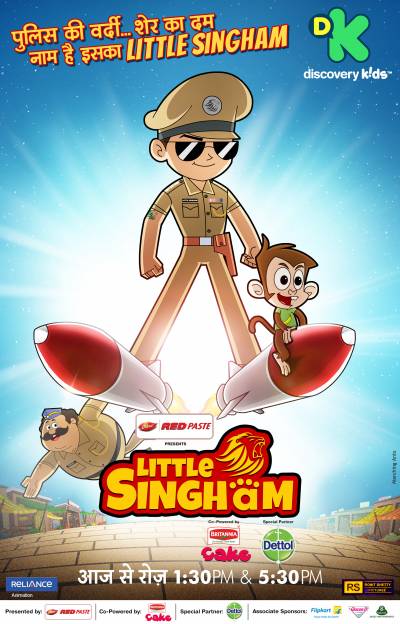
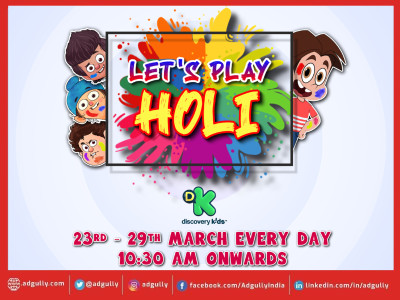
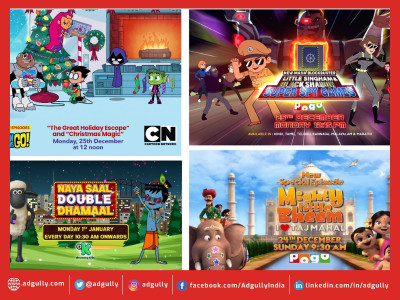
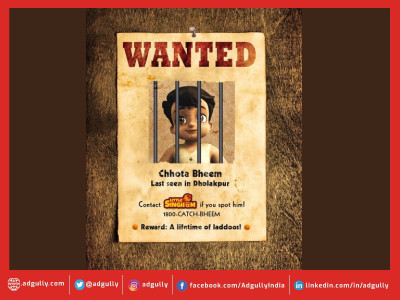
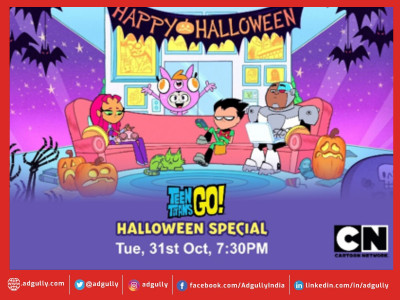
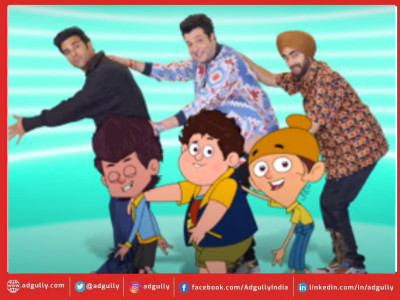
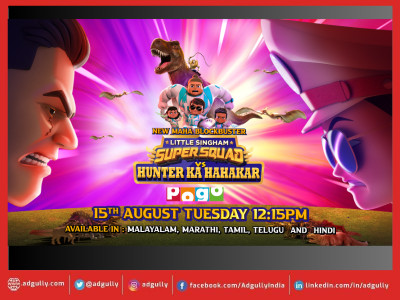

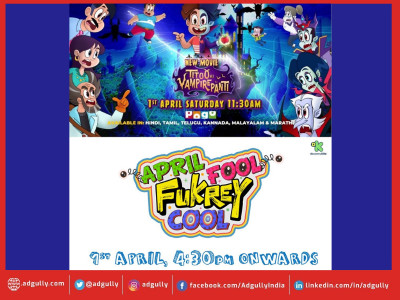

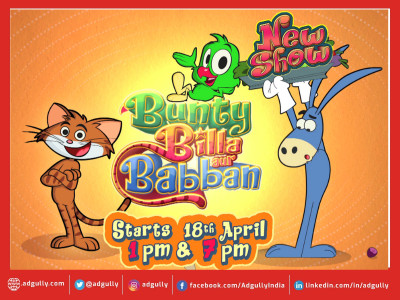



Share
Facebook
YouTube
Tweet
Twitter
LinkedIn